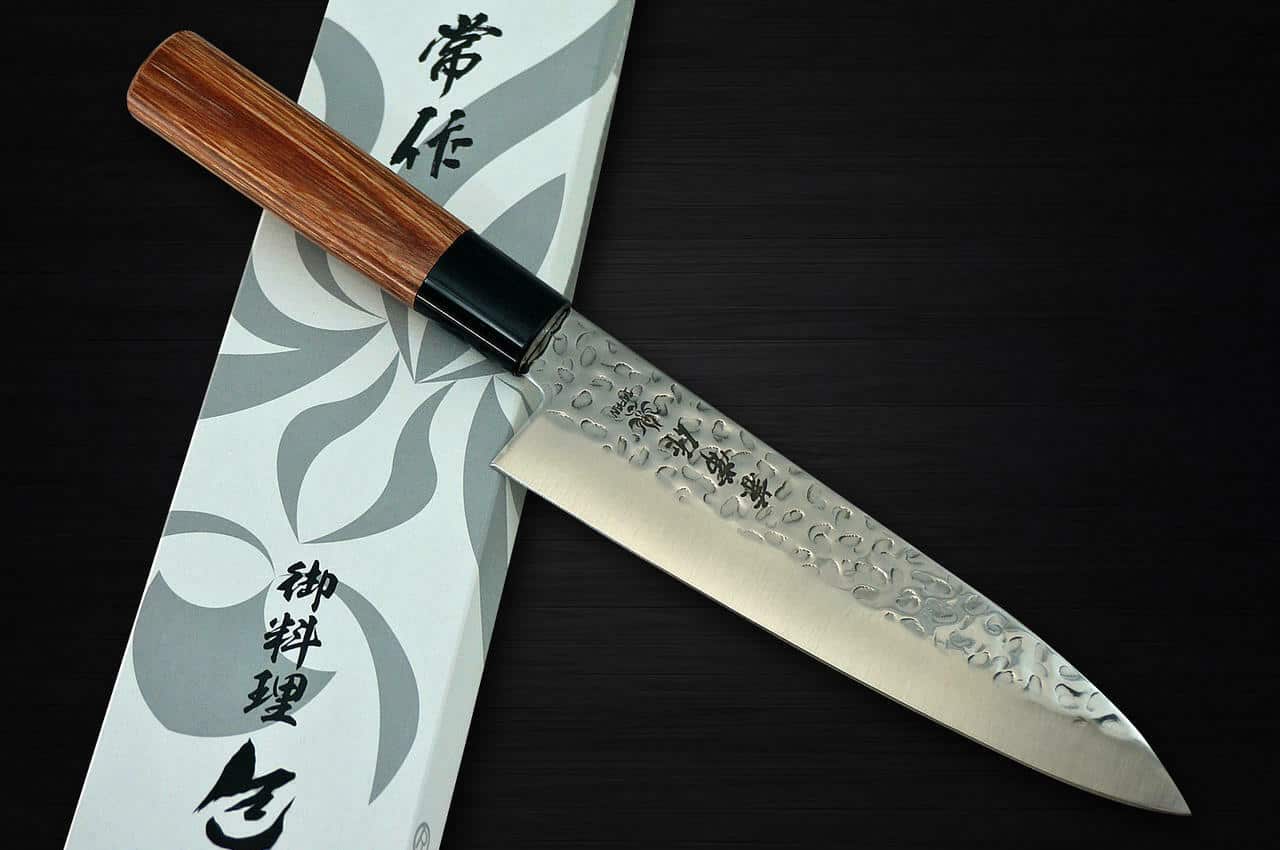The gyuto knife is extensively used in making Japanese cuisine. This particular knife is quite versatile and performs a range of functions. These functions vary from cutting methods and styles. This knife is mainly used for cutting meat, vegetables, and fruits. However, like other tools and machines, knives need sharpening if you want to use them for a long time. Regular maintenance aids in durability and optimal performance. Therefore, we came up with a step-by-step process to help you master how to sharpen a gyuto knife.
How to Sharpen a Gyuto Knife in 5 Simple Steps
The Japanese use quite a wide range of methods to sharpen a gyuto knife, but the most common way is using a whetstone. If you want to restore the sharpness of your gyuto knife, follow the steps below:
Step 1. Get Ready for Sharpening
First, soak the whetstone in water for a duration of five to ten minutes. It’s essential to follow this step because it takes away the air from the whetstone. Apart from this, you will need a well-balanced table and a towel. The towel will secure the stone and prevent it from slipping.
In addition, you should check the state of the gyuto knife’s edge before you begin the process. There are three types of whetstones used for sharpening. Knowing the knife’s condition will help you choose the right whetstone.
The different grit sizes for sharpening are Arato, Nakato, and Shiageto. Knives that have not been sharpened for a long time need Arato. The middle and finishing stones are the Nakato and Shiageto, since these two have finer grit.
Step 2 — Sharpening the Blade
Set down the knife’s edge on the whetstone. It would be best to use your fingers to push and press the key point to sharpen. Then, set your angle and slash the blade on the whetstone until you’ve reached the edge of it. Continue the stroking of the blade five to six times. However, make sure you sharpen the blade from every side till the edge curvatures are visible.
Step 3 — Sharpen the Opposite Side
The third step is to sharpen the opposite end of the blade. For this, follow the same procedure as the second step. Take time to sharpen both sides. Doing so removes the burr, which builds up when sharpening the first side.
Step 4 — Take Out the Edge
Once you are done sharpening the blade, you can now remove the edge. For this step, you will need a newspaper. Set the blade’s edge on the newspaper and start the stroking motion again. Then, move the gyuto knife’s blade from right to left while keeping the edge on the newspaper. Read our guide on the best japanese gyuto knife.
Step 5 — Wash the Knife
Finally, it’s time to wash your gyuto knife! Afterward, clean it with a soft cloth. Remember not to leave your knife wet since it can cause rust.
Final Verdict
A dull knife is no good and can affect your performance in the kitchen. A sharp knife makes preparing cuisines easier, especially if you use different cutting techniques and methods. In contrast, putting off the sharpening process will cost you time and energy. Therefore, follow the above mentioned detailed guide on how to sharpen a gyuto knife.

Gary Portman is the founder and main author of Knivesadvice.com. With his extensive knowledge and experience, he is committed to assisting people in choosing the perfect knife for their needs. Through his articles, Gary shares valuable insights on various aspects of knives. With his expertise, readers can make informed decisions and find a knife that is tailored to their preferences and requirements. You can find more info about Gary here.

